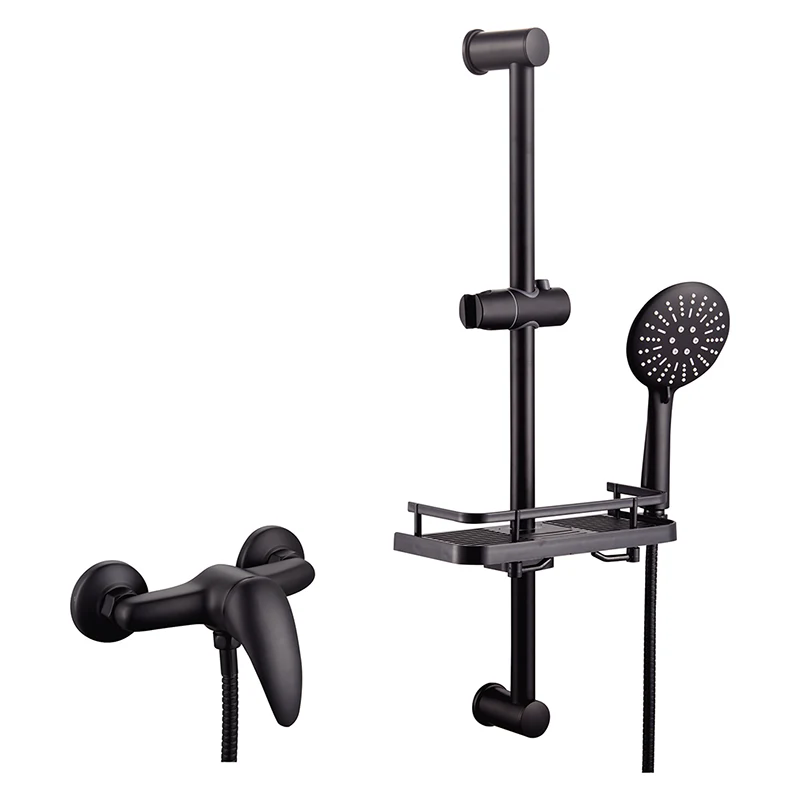Bathroom Faucets: A Blend of Style, Function, and Efficiency
2025-03-05
When it comes to designing a bathroom, every detail counts. One of the most frequently used fixtures in any bathroom is the faucet. Bathroom faucets are not only essential for daily activities such as washing hands, brushing teeth, or taking a shower, but they also contribute to the overall aesthetic of the space. Choosing the right bathroom faucet can elevate the look and feel of your bathroom while offering practical benefits like water efficiency, ease of use, and durability.
In this blog, we will explore the different types of bathroom faucets, their features, and how to choose the best faucet for your needs.
Types of Bathroom Faucets
1. Single-Hole Faucets
Single-hole faucets are one of the most popular choices for modern bathrooms. As the name suggests, these faucets are installed using a single hole in the sink or countertop. They often have a sleek and minimalistic design, making them perfect for smaller bathrooms or contemporary spaces. Single-hole faucets usually combine both the spout and the handle into one unit, which saves space and gives the bathroom a cleaner, more streamlined look.
2. Centerset Faucets
Centerset faucets are designed with three pieces: two handles and a single spout. These faucets are usually installed on sinks with three holes: one for the spout and two for the handles. The handles and spout are connected to a central unit, making it easier to install compared to separate component faucets. Centerset faucets are commonly found in traditional or transitional bathrooms and offer a timeless look.
3. Widespread Faucets
Widespread faucets feature separate handles and a spout that are mounted independently of each other, typically over a wide area. These faucets require three installation holes in the sink or countertop, which makes them ideal for larger bathroom vanities. The flexibility of widespread faucets allows for a range of design options and greater customization. They are often used in luxury bathrooms or spaces where high-end style is desired.
4. Wall-Mounted Faucets
Wall-mounted faucets are becoming increasingly popular due to their modern look and practical design. These faucets are mounted directly on the wall above the sink or bathtub, which eliminates the need for a faucet base on the countertop. This design creates a sleek, floating look and makes cleaning the countertop easier. Wall-mounted faucets are especially ideal for vessel sinks or freestanding bathtubs and can give your bathroom a contemporary edge.
5. Deck-Mounted Faucets
Deck-mounted faucets are mounted on the surface of the sink or bathtub. They are a traditional choice and can come in a variety of styles, such as single-handle or dual-handle designs. These faucets are typically found in both modern and classic bathrooms, offering versatility in design while maintaining functionality. Deck-mounted faucets are a great option if you're looking for a more affordable or simple installation.
6. Touchless Faucets
For those seeking maximum convenience and hygiene, touchless faucets are a great option. These faucets use sensors to detect when your hands are under the spout and automatically turn on or off the water flow. This hands-free operation is perfect for preventing the spread of germs and maintaining a clean environment in the bathroom. Touchless faucets are especially common in public restrooms but are also becoming a popular choice for residential bathrooms.
Features to Look for in Bathroom Faucets
1. Water Efficiency
With the growing emphasis on sustainability, choosing a water-efficient faucet is more important than ever. Look for faucets that have a WaterSense label, which indicates that they meet EPA (Environmental Protection Agency) standards for water efficiency. These faucets are designed to reduce water consumption without compromising performance. Water-saving features can help lower your water bill while conserving precious resources.
2. Durability and Material
Bathroom faucets come in various materials, such as chrome, stainless steel, brass, and bronze. Stainless steel faucets are known for their durability and resistance to rust and corrosion, making them a great choice for bathrooms with high humidity. Brass faucets are often favored for their strength and classic appearance. It's essential to choose a material that suits your bathroom's style and will stand up to frequent use.
3. Finish Options
Faucets come in a wide range of finishes, which can complement your bathroom's décor. Common finishes include polished chrome, brushed nickel, matte black, antique bronze, and gold. The finish you choose can have a significant impact on the overall aesthetic of your bathroom. For example, a polished chrome faucet offers a sleek and modern look, while a matte black faucet creates a bold, contemporary vibe.
4. Easy Maintenance
A bathroom faucet should be easy to maintain to ensure long-lasting performance. Look for faucets that feature easy-to-clean finishes, such as brushed nickel or matte finishes, which resist water spots and fingerprints. Additionally, consider faucets with ceramic disc cartridges, which are known for their durability and smooth operation. This design can help prevent leaks and reduce the need for frequent repairs.
5. Style and Design
Faucets are available in a wide range of styles, from traditional to modern, minimalistic to elaborate. Your choice of faucet should complement the overall design of your bathroom. For example, a vintage-inspired faucet with intricate details may suit a classic or rustic bathroom, while a sleek, contemporary faucet works well in a modern space. Make sure the faucet's design aligns with your bathroom’s overall aesthetic.
How to Choose the Best Bathroom Faucet
Choosing the right bathroom faucet involves considering several factors, including your style preferences, budget, and functionality needs. Here are a few steps to help you make the right choice:
1. Determine the Faucet Type: First, decide which type of faucet fits your bathroom sink or vanity. Consider factors such as the number of mounting holes in your sink and the space available in your bathroom.
2. Set a Budget: Bathroom faucets come in a wide price range, from budget-friendly options to high-end models. Set a budget that works for you, but remember that investing in a durable, high-quality faucet can save you money in the long run due to fewer repairs and replacements.
3. Consider Your Bathroom's Style: Choose a faucet that complements your bathroom’s design. Think about the material and finish, and ensure it matches the look of other fixtures in the room, such as your showerhead, towel racks, and cabinet hardware.
4. Prioritize Functionality: In addition to looks, make sure the faucet you choose offers the functionality you need. Features such as water-saving capabilities, ease of use, and durability should be top priorities.
Conclusion
The bathroom faucet is a vital component of your bathroom, serving both functional and aesthetic purposes. Whether you're remodeling your bathroom or simply upgrading your fixtures, choosing the right faucet is essential for creating a space that is both beautiful and efficient. By considering the various types, features, and designs of bathroom faucets, you can find the perfect one that meets your needs and enhances the overall appeal of your bathroom.



